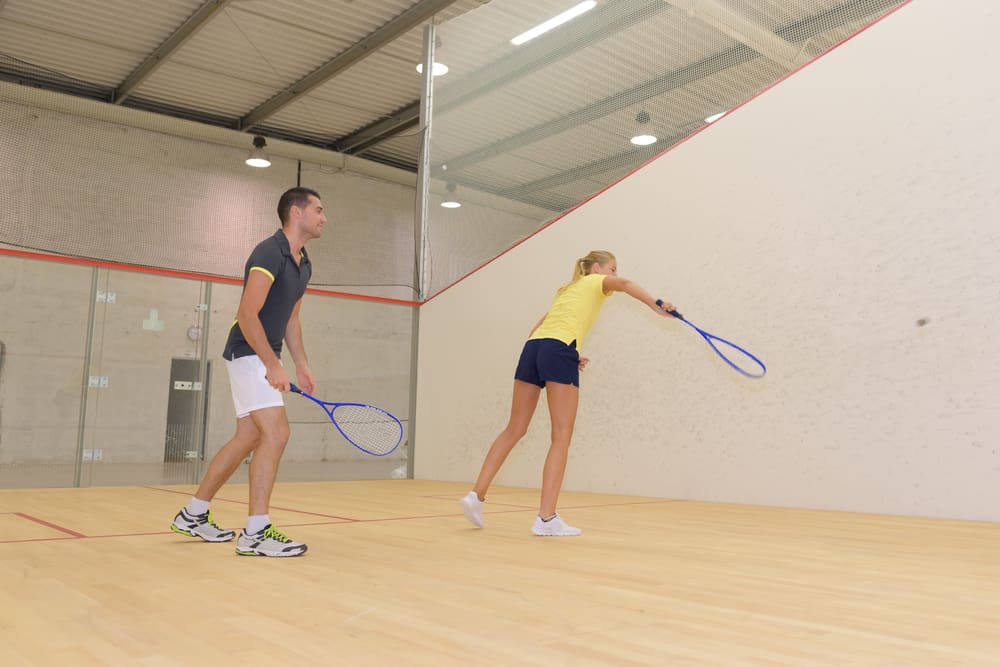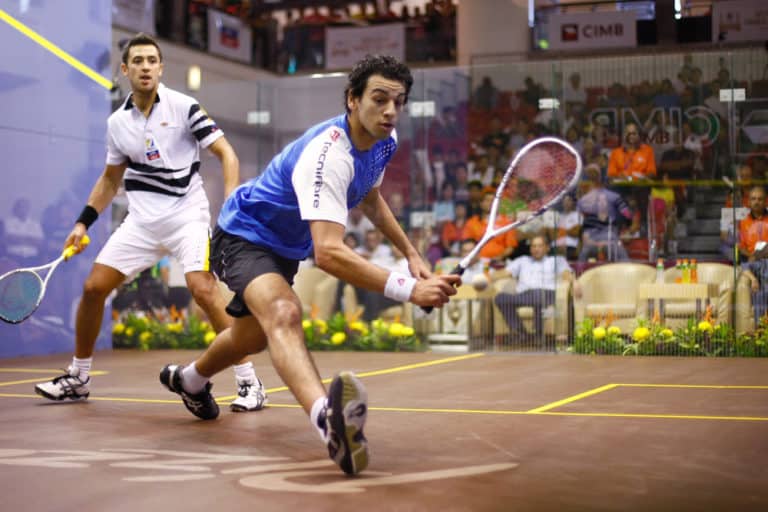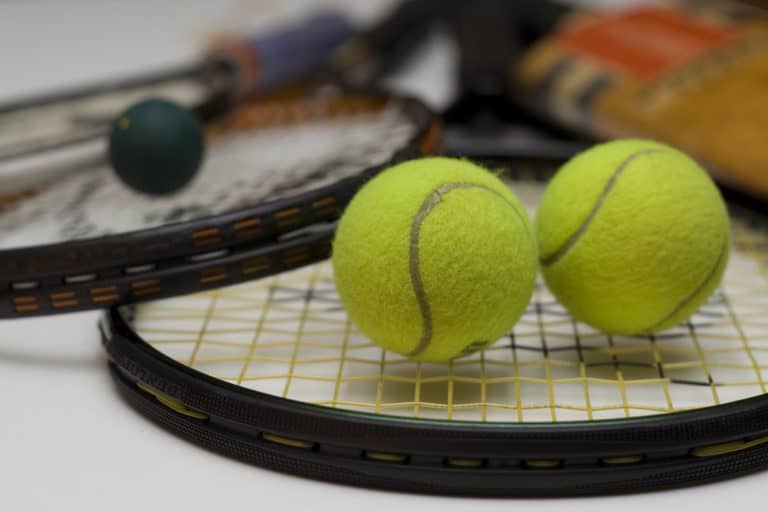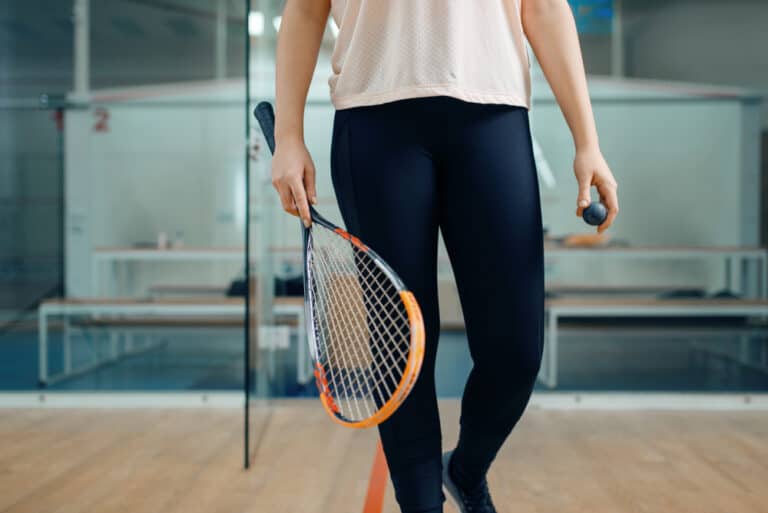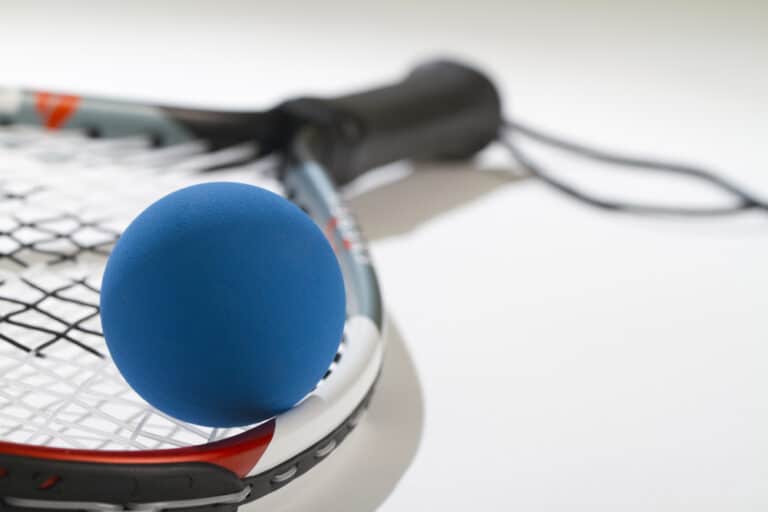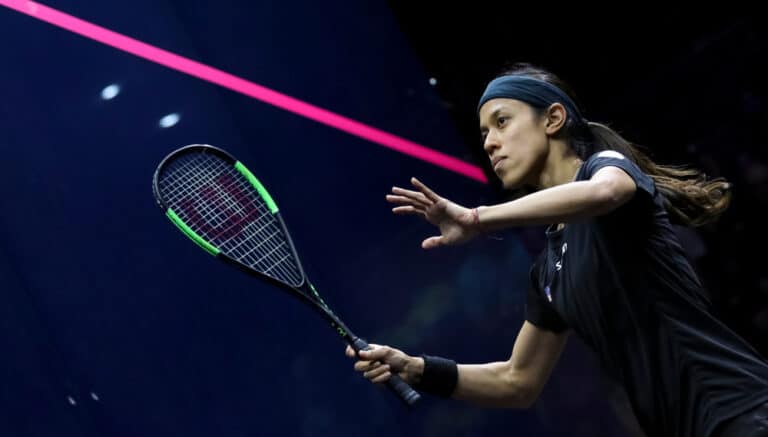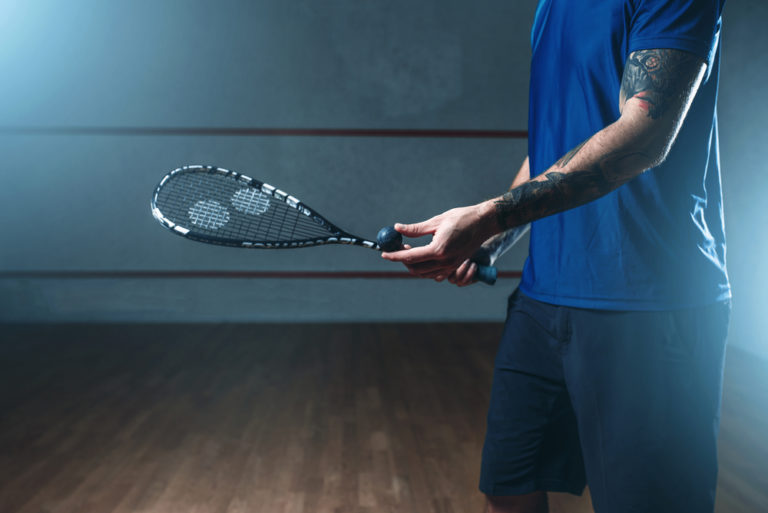Do You Need To Be Fit To Play Squash?
If you ever want to see the level of fitness you need to play squash, play with someone more skilled and fitter than you. This opponent will have the less skilled player running all over the court to eventually ask for mercy, while the opponent will seem almost unphased by the whole game.
In squash, fitness is a relative turn, and while it is an incredibly demanding game requiring a high degree of fitness, the player only needs to be as fit as the opponent. Players with equal skill levels and who are not particularly fit will still enjoy a game together.
At the competitive level of squash, players are superbly fit and have aerobic endurance, strength, speed, power, and flexibility, and they must be agile. For those players who don’t have the fitness characteristics, squash is an excellent and fun way of achieving them.
You Get Fit By Playing Chess
To enjoy a competitive game of squash, you must be as fit as your opponent.
One of the best things about the game of squash is that as long as the two players have similar fitness and skill levels, they will both enjoy an incredible workout that will leave them tired, sweaty, and satisfied.
Unlike golf, where the handicap system enables two completely differently skilled golfers to play together on an almost equal footing, in squash, the better player will control the game, making it a completely unfair outcome.
The game can be quite discouraging and even a little pointless when the opponent is a substantially better player. The player with the better level of skill will control each point while remaining in charge of the middle space in the court, while the less competent payer will be sent all over the court trying to return more and more difficult shots.
Squash is one of the most demanding physical sports and ranks at a similar level to boxing, Rugby 7s, Basketball, water polo, ultimate fighting, and water polo.
Squash is exceptionally tough on the ankles, knees, hips, and shoulders, and the rallies between skilled players are more frequent and last significantly longer than in badminton or tennis.
The typical heart rate of squash players averages 168 bpm and peaks at 190 – 199 bpm.
The Fitness Needed To Play Squash At Top Competitive Levels
ESPN has developed a scale of sports and needed fitness to play them at the highest levels. The top twenty five are listed in the table below.
In this table, squash appears in position 5 on the fitness level required to achieve top levels in the sport.
| Ranking | Sport | Overall Fitness Rating (%) |
| 1 | Water Polo | 80.3 |
| 2 | Rugby 7s | 79.6 |
| 3 | American Football | 79.3 |
| 4 | Ultimate | 79.3 |
| 5 | Squash | 79.2 |
| 6 | Martial Arts | 79.1 |
| 7 | Boxing | 79.0 |
| 8 | Badminton | 78.5 |
| 9 | Gymnastics | 78.4 |
| 10 | Rugby League | 78.0 |
| 11 | Tennis | 77.5 |
| 12 | Field Hockey | 77.4 |
| 13 | Rugby Union | 77.4 |
| 14 | Surfing | 76.9 |
| 15 | Swimming (200m Free) | 76.4 |
| 16 | Fencing | 76.0 |
| 17 | Table Tennis | 75.8 |
| 18 | Australian Football | 75.1 |
| 19 | Basketball | 74.9 |
| 20 | Wrestling | 74.9 |
| 21 | Baseball | 74.5 |
| 22 | Track Cycling | 74.1 |
| 23 | Motocross | 74.0 |
| 24 | Rowing | 73.9 |
| 25 | Ice Hockey | 73.5 |
| 26 | Football / Soccer | 73.2 |
The table combined the following fitness metrics to arrive at the score.
- Squash players must have aerobic endurance.
- Strength.
- Squash players must have speed and power.
- Squash players must be flexible.
- Squash players must be agile.
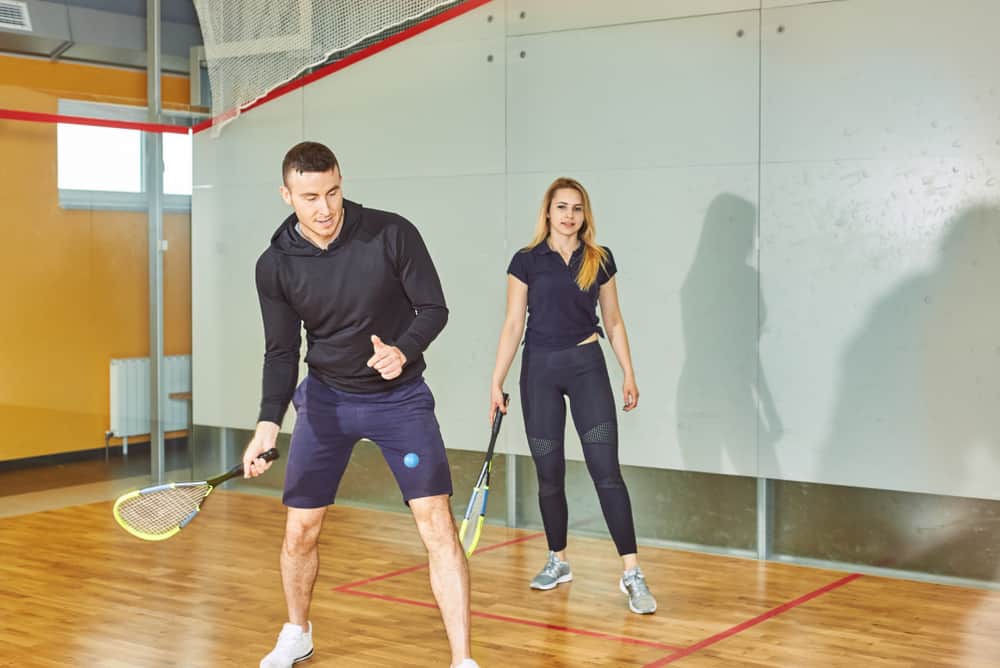
Squash Players Must Have Aerobic Endurance
One of the main fitness metrics needed for squash is Aerobic Endurance.
In squash, the payer who controls the center controls the game. To achieve this, squash players have to be able to move with bursts of speed over short distances and then reverse their steps to try and reclaim the center.
Movements across the course are in each direction (forwards, backward, and to each side), which is incredibly wearing for someone who is not superbly fit.
If there is a disparity in the players’ skill levels, the better player will control the ball’s movement with less energy than the opponent.
The ESPN fitness score for aerobic endurance was 85.5
Strength
Pure physical strength (the ability to pick up weights for long periods) is not a key requirement of a squash player.
The requirement for strength in squash players is so low that EPN does not provide a rating.
Squash Players Must Have Speed And Power
Speed and power ate critical abilities to rise up in the squash ranks.
The faster a player can respond, the more he can control the game and stay near the center.
The winning squash play is sometimes low down with a low bounce at the front of the court.
To respond to this, the player has to get to the front of the court with speed and have the power necessary in the return shot to place the ball strategically, allowing him to regain the center.
ESPN rated this fitness characteristic at 86.7.
Squash Players Must Be Flexible.
While a squash player does not need the flexibility of a world-class gymnast, the sport requires a significant amount.
The squash court dimensions are
- The length of the court is 9.75m.
- The width of the court is 6.4m.
- The distance of the diagonal is 11.665m.
Which is a relatively small space for two adults to be charging around.
Players often have to lean around the other player or reach high up or across the court to return a ball. A tennis player is sometimes called upon to reach very difficult spaces; however, in squash, this is generally the case with most shots.
Once again, the player who controls the center has less need to be incredibly flexible, but it helps.
ESPN gave squash a rating of 74.00 for flexibility.
Squash Players Must Be Agile
Some of the moves required of squash players include the following.
- Leaping
- Spinning
- Stopping
- Bending
- Jumping
- Sprinting
- Running
The movements end with the player returning the squash ball against the wall.
To qualify as a top-level squash player, it is essential to be extremely agile.
ESPN gave squash a rating of 77.90 for agility.
Conclusion
If you are not fit, playing squash is an excellent way to improve the following fitness metrics aerobic endurance, strength, speed and power, flexibility, and agility. Squash is a “short” game requiring short bursts of speed followed by the need to reverse and get back into position.

